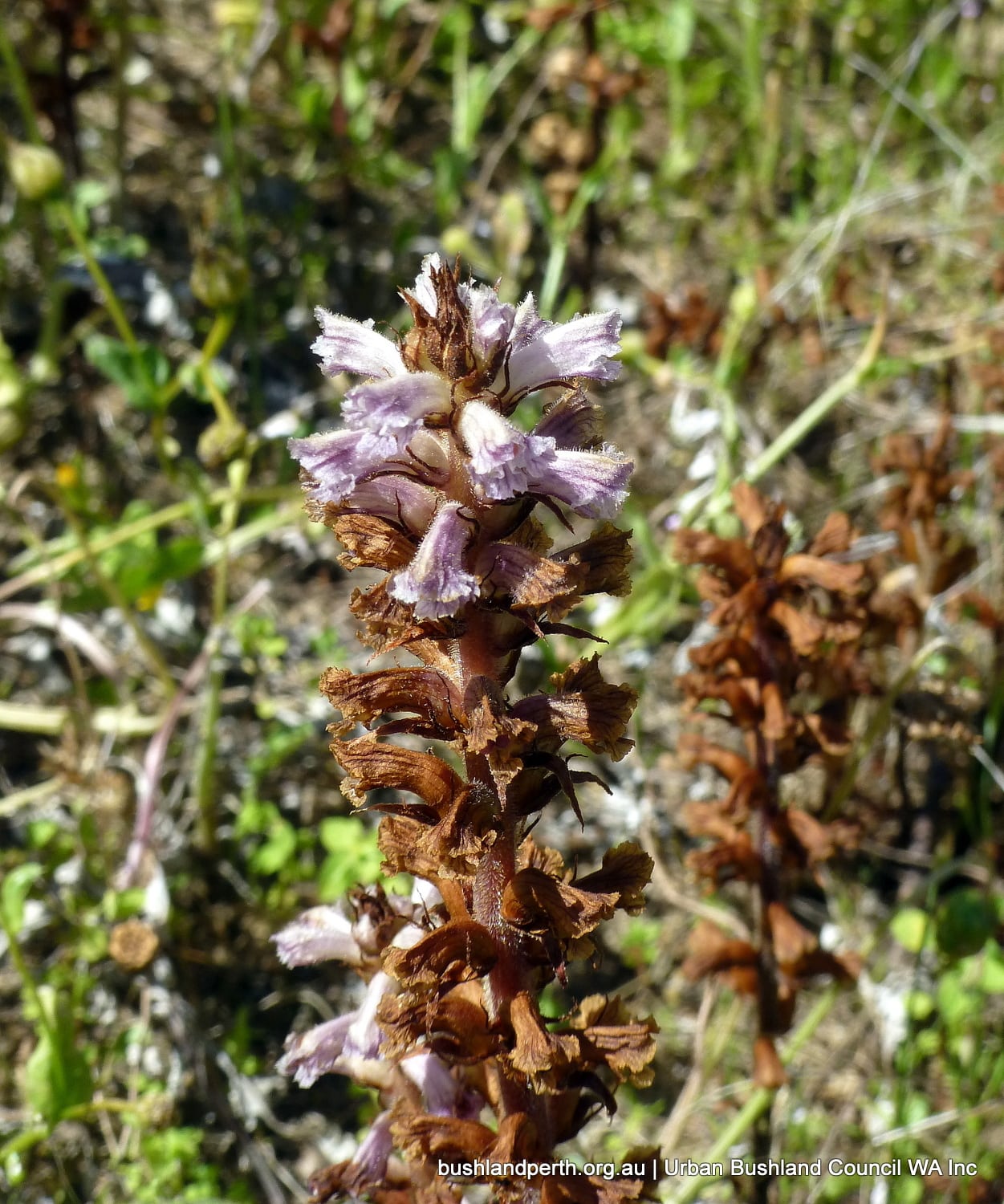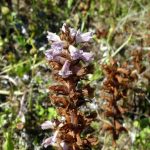Lesser Broomrape

Common name
Lesser Broomrape
Scientific Name
Orobanche minor
Type of plant
Uncategorised
About this weed
This unusual brown weed is a parasitic plant that can grow to 50 cm’s but usually is much smaller and produces pinkish-brown flowers in winter and spring before dying back over summer. It was originally a native of Europe. Note – this species is the only one from the Genus Orobanche not a Declared Pest in Western Australia.
Description
This easily recognised erect, parasitic plant has a translucent pinky brown stem that is sticky to touch. Lesser Broomrape grows from a bulb-like structure underground from which roots penetrate their host. It emerges in winter and produces the brownish flowers in winter and spring.
Impact on Bushland
Not available.
Location
Lesser Broomrape is widespread throughout the South-West Province, parasiting many garden plants and weeds including Capeweed and other broad-leaf weeds on roadsides. It prefers shallow soils over granite, deep sand, calcareous soils and clay. Coastal dunes and cliffs, sandplains, and granite outcrops are also suitable locations for this weed.
Priority for removal
Unknown:
Management (hand)
Not available.
Management (herbicide)
Not available.
Flowering month/s
September, October, November, December
Flower colour/s
Pink, Purple, White, Brown, Cream
Information source
https://florabase.dpaw.wa.gov.au/browse/profile/7122
Additional information
https://florabase.dpaw.wa.gov.au/weeds/swanweeds/
Hussey, B.M.J., Keighery, G.J., Dodd, J., Lloyd, S.G. and Cousens, R.D. (2007) Western weeds. A guide to the weeds of Western Australia, Second Edition, The Weeds Society of Western Australia, Victoria Park, Western Australia.
https://www.agric.wa.gov.au/pests-weeds-diseases/weeds/declared-plants

